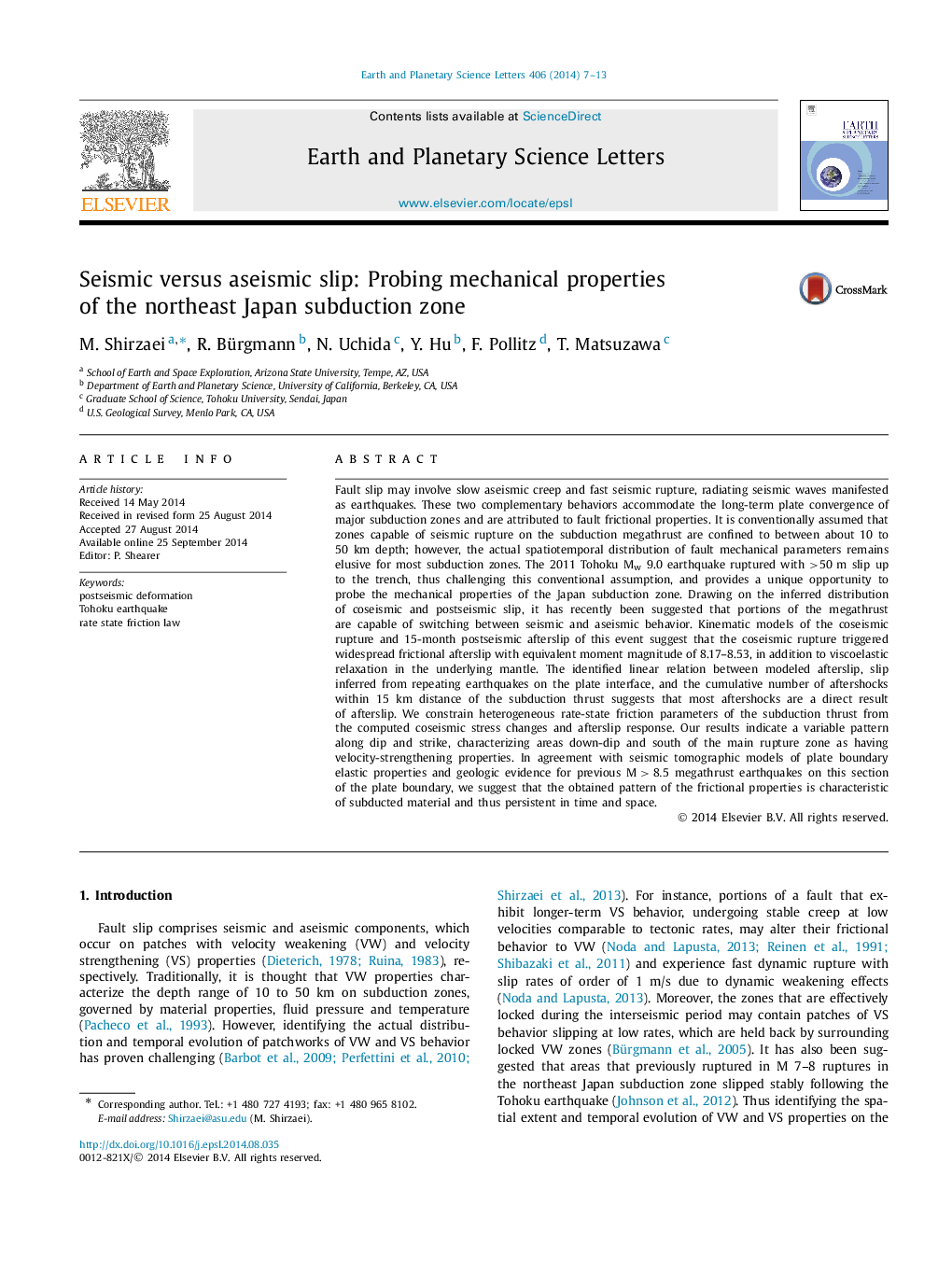| کد مقاله | کد نشریه | سال انتشار | مقاله انگلیسی | نسخه تمام متن |
|---|---|---|---|---|
| 6428959 | 1634750 | 2014 | 7 صفحه PDF | دانلود رایگان |
- Investigating 15-month postseismic deformation following the Tohoku earthquake.
- Time-dependent frictional afterslip model of the Tohoku earthquake.
- Rate state friction model to constrain heterogeneous fault frictional properties.
Fault slip may involve slow aseismic creep and fast seismic rupture, radiating seismic waves manifested as earthquakes. These two complementary behaviors accommodate the long-term plate convergence of major subduction zones and are attributed to fault frictional properties. It is conventionally assumed that zones capable of seismic rupture on the subduction megathrust are confined to between about 10 to 50 km depth; however, the actual spatiotemporal distribution of fault mechanical parameters remains elusive for most subduction zones. The 2011 Tohoku Mw 9.0 earthquake ruptured with >50 m slip up to the trench, thus challenging this conventional assumption, and provides a unique opportunity to probe the mechanical properties of the Japan subduction zone. Drawing on the inferred distribution of coseismic and postseismic slip, it has recently been suggested that portions of the megathrust are capable of switching between seismic and aseismic behavior. Kinematic models of the coseismic rupture and 15-month postseismic afterslip of this event suggest that the coseismic rupture triggered widespread frictional afterslip with equivalent moment magnitude of 8.17-8.53, in addition to viscoelastic relaxation in the underlying mantle. The identified linear relation between modeled afterslip, slip inferred from repeating earthquakes on the plate interface, and the cumulative number of aftershocks within 15 km distance of the subduction thrust suggests that most aftershocks are a direct result of afterslip. We constrain heterogeneous rate-state friction parameters of the subduction thrust from the computed coseismic stress changes and afterslip response. Our results indicate a variable pattern along dip and strike, characterizing areas down-dip and south of the main rupture zone as having velocity-strengthening properties. In agreement with seismic tomographic models of plate boundary elastic properties and geologic evidence for previous M>8.5 megathrust earthquakes on this section of the plate boundary, we suggest that the obtained pattern of the frictional properties is characteristic of subducted material and thus persistent in time and space.
Journal: Earth and Planetary Science Letters - Volume 406, 15 November 2014, Pages 7-13
